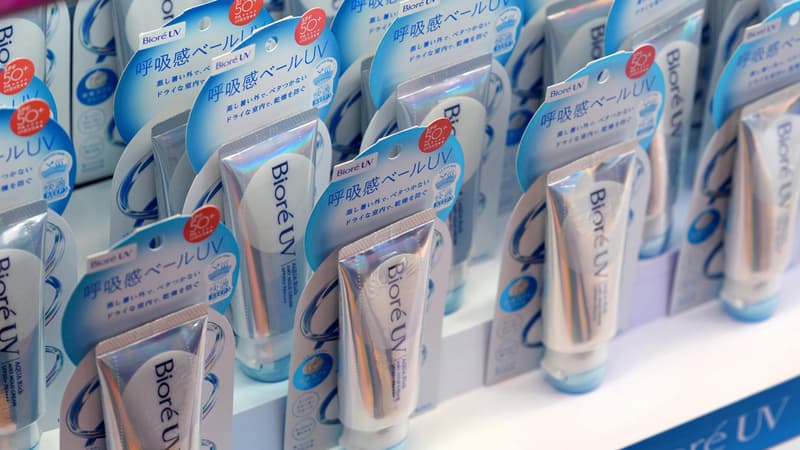Two million visits for a video of solar creams: it is the unexpected success of Hannah Price, a YouTuber with headquarters in Tokyo, with its comparison of Australian and Japanese sunscreen. A madness that reflects the growing interest in the care of Asia’s skin, and in particular for Japanese solar products, acclaimed by its light and pleasant texture.
“From my arrival in Japan in 2012, I love the Japanese sunscreen,” Price told AFP in his Tokyo studio. “The first time I tried it, I told myself: it is much better than everything I could use in Australia,” his country of origin, where solar creams are “thick, sticky and fatty.” Japanese manufacturers want to extend taking advantage of the development of tourism in Japan and export development.
Kao’s Japanese chemistry giant and cosmetics plans to open three new factories abroad (Indonesia, Brazil, Germany) and aims at 35 billion yen (223 million euros) billing in solar creams by 2027, or 1.6 times more than in 2023. Its biorric brand of the Biorre regulations.
“Write white”
Influencers publications have a “very strong” impact on sun protection sales, Rejocija Takuya Wada, Kao Marketing Manager. “There are no borders for access to information on social networks”, which gives brands a global scope, he explains. The R&D Director of the “Skincare” products, Takashi Fukui, explains that the group began to develop solar creams in the 1980s and 90s, when the consciousness of the risks of tan increased.
But Japan’s cultural obsession with clear skin dates back to the seventh century. The use of white dust imported from China became a marker of social distinction in the nobles, to the point that an ancient Japanese proverb states that “the white skin hides seven defects.” In the 1990s, the Japanese began using solar or cosmetic creams to avoid sunbathing, a trend called “bihaku”, “bright white”.
Today, women use daily sunscreen in Japan to protect themselves from tasks and aging caused by UV rays, explains Takashi Fukui. But combining the effectiveness of the protection and comfort of the application is technically difficult, it admits. And it is precisely this requirement that, according to him, distinguishes the Japanese brands of its western competitors.
Sold all year
“There are always new technologies, innovative textures, Japan is often ahead of other countries,” Thai beauty influencer Suari Tasanakulpan, 40, who tests Japanese sunscreens on YouTube to AFP. In the archipelago, the choice is immense: in a store of a large pharmacy chain in Shibuya, a animated tokyo district, you can find almost 90 different solar products aligned on the shelves.
If summer is still the high season, solar creams are available throughout the year in many stores such as Matsukiyo Cocokara, which makes the product interesting. “Japan has a relatively high number of sunny days in winter, and the sun’s hours are long,” said Takeshi Otsuki, deputy director of the group’s cosmetic division. “Sales are progressing from one year to another,” he said, because “more and more people use daily sun protection and their needs are diversifying.”
The male clientele is also increasing, and the “Japanese solar products are very popular among foreign tourists”, which sometimes buy it in lots, he adds. The price of Hannah Youtuber sees the multiplication of information available on the subject as a gain for all. “It means that we will be better protected in general, and it is good for everyone,” he concludes.
Source: BFM TV


